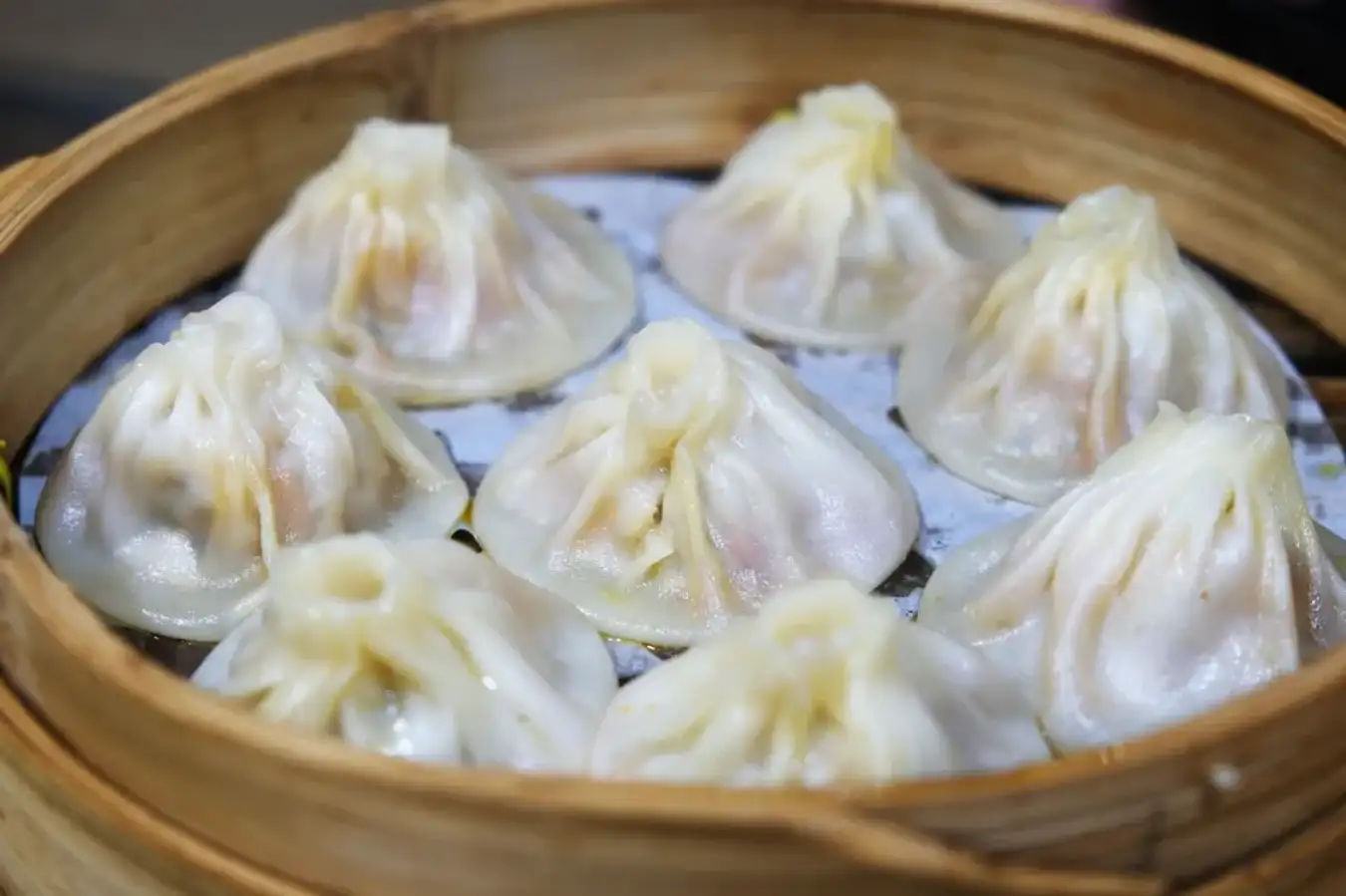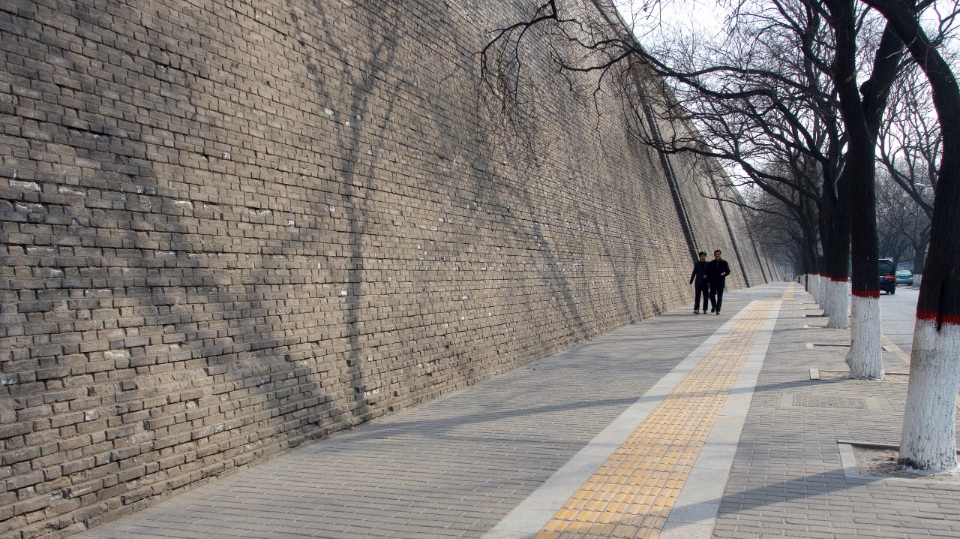The Mausoleum of Qin Shi Huang was built in 247 BC and completed in the second year of the Qin Dynasty (208 BC), lasting 39 years and was the first large-scale royal mausoleum with extremely sophisticated and magnificently designed. Qin Shi Huang’s mausoleum is located in the south of the inner city, barrel-shaped, 51m high, with a bottom circumference of more than 1,700m.
- Guide to Xian nightlife (Xi An China nightlife) — 9+ what to do, where to go & best things to do in Xi An at night
- Where to visit in Xian? — 8 must-see & best places to visit in Xi An, China
- Xi’an night market — 10 best Xi an night market you should visit
- The ULTIMATE Lijiang travel guide: Top things to do, where to visit, stay, eat & MORE
- The FULLEST guide to Fenghuang Ancient Town: Top things to do, Eat, Tips & MORE

According to historical records, in Qin Shi Huang’s mausoleum there are many palaces displaying many strange treasures. Around the Qin Tomb there are a large number of burial pits and mausoleums of different shapes and meanings, more than 400 of which have been excavated, including the Terracotta Warriors and the horse holes.
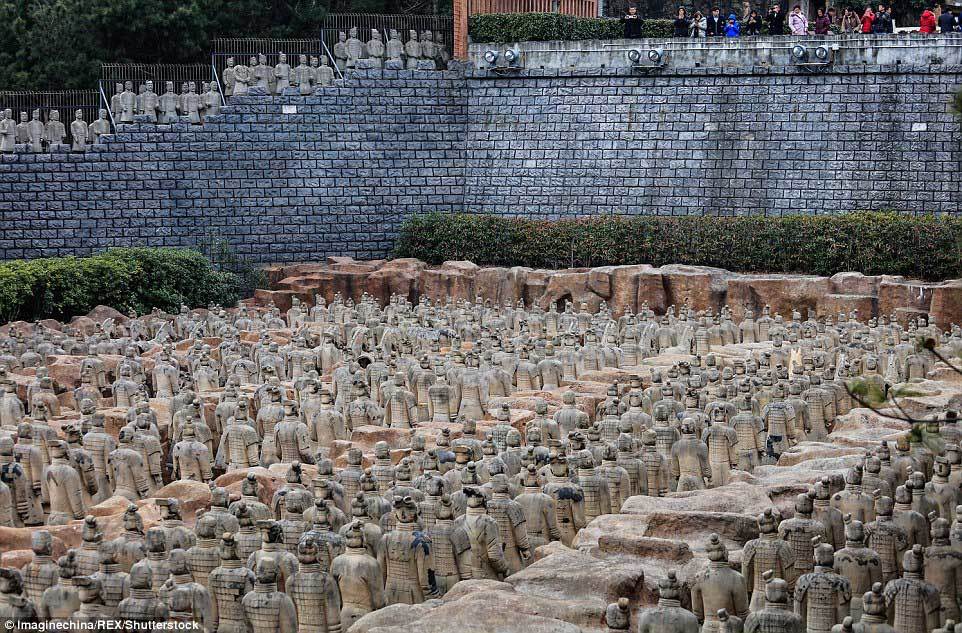
Qin Shi Huang’s mausoleum is located north of Li mountain in Shaanxi province, 50km east of Xi’an. This is one of the famous tourist attractions in Xi’an that any tourist wants to experience once and come here to explore.

Qin Shi Huang’s mausoleum is one of the largest royal mausoleums in the world, with a special structure and rich meaning, fully demonstrating the artistic talents of the Han ethnic working people in ancient China more than 2,000 years ago, is the pride and heritage of the China. In 1987, the Tomb of Emperor Qin Shi Huang was included in the UNESCO World Heritage List.
Qin Shi Huang’s mausoleum is located north of Li mountain in Shaanxi province, 50km east of Xi’an. This is one of the famous tourist attractions in Xi’an that any tourist wants to experience once and come here to explore.
Huaqing Palace
Huaqing is a majestic palace complex located right next to Hoa Thanh hot spring, located in the north of the foot of Li mountain. According to Chinese history records, this was the resort of Yang Guifei – one of the four great beauties of ancient China, ordered to be built by Emperor Xuanzong.
The palace has a bold ancient architectural style, with a communal house, garden, fish pond,… outstanding with dark red communal house columns and curved, tiled roofs that stand out against the sky.
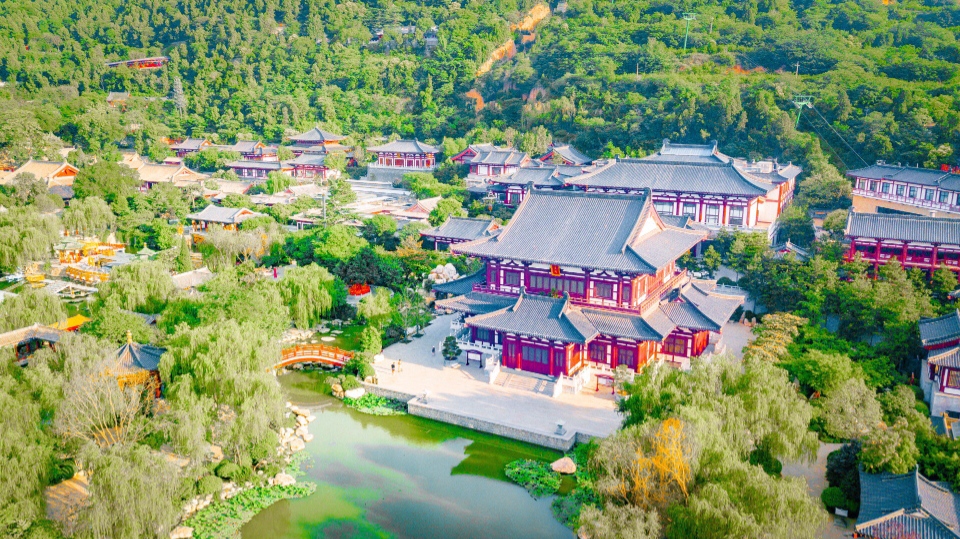
Huaqing Palace was another palace of the feudal emperors of the Tang Dynasty, 25km eat Xi’an city, Shaanxi province. The palace has its back against Li mountain, facing Weihe river, with large scale and magnificent architecture. It was originally named Tangquan and was later renamed Wenquan. By the time of Emperor Xuanzong of the Tang Dynasty, the palace was renamed Huaqing.


Huaqing Palace was first built in the early Tang Dynasty and developed strongly after Emperor Xuanzong came to power. Emperor Xuanzong of the Tang Dynasty usually came here in October every year and returned to Chang’an at the end of the year. This is a famous ancient palace with hot springs in Shaanxi, that is included in China’s 5A National Heritage Site.
Furong Garden
Located southeast of the Great Wild Goose Tower in Yanta District, Xi’an City, Shaanxi Province, the 1,000-acre Great Tang Furong Garden was rebuilt on the north side of the original Furong Garden, replicating the style of the royal gardens of the Tang Dynasty. This is the first large-scale royal garden-style cultural park in China that fully represents the style of the Tang Dynasty at its most flourishing. This is one of the national 5A scenic spots in Xi’an that is famous for domestic and foreign tourists.

Construction on Furong Garden began in 2002, was completed in 2004 and officially opened in 2005. In Furong Garden, there are a number of prominent attractions visited by many tourists. Tickets to Phu Dung Vien Dai Duong are 120 yuan/person, opening hours are from 10am to 10pm daily.
Fortifications of Xi’an (Xi’an City Wall)
Xi’an City Wall is located in the central area of Xi’an city. Xi’an City Wall is the common name of Xi’an Tang City Wall and Xi’anming City Wall, but usually refers mainly to Xi’anming City Wall.

Built during the Ming Dynasty, the Ming Wall is the oldest military fortified defense system in the world, with a city defense area of 14 square kilometers and 18 city gates open for visitors to visit. From here, visitors can observe the entire scene of local people’s activities.
Xian city wall is 12 meters high, 12-14 meters wide at the top and 15-18 meters wide at the bottom, has a closed rectangular shape with a circumference of 13.74 km. Inside the citadel wall, people often call it the ancient citadel with an area of 11.32 km2. The famous Xi’an Bell Tower and Drum Tower is also located in the center of the ancient citadel.


Xi’an city wall has four main gates: Changle Gate (East Gate), South Gate (Yongning Gate), Anding Gate (West Gate), Anyuan Gate (North Gate), these four gates are also the original gates of the city wall. In addition to the solid fortifications of the city gate, the four corners of the city wall also have watchtowers, used to support the city gate, observe and defend against enemies from all sides. Each tower has three floors: gate tower, archery tower, and main tower. The main building is 32 meters high, more than 40 meters long, has a hilltop shape, four raised corners, three floors of double eaves, the bottom floor has a surrounding corridor, ancient and majestic.


Xi’an City Wall is the largest and best-preserved ancient city wall in China, and is one of the first national key cultural relics and a 5A-level tourist attraction in China.
This place is famous as the most beautiful ancient citadel. You can rent a bicycle or go for a walk to enjoy the ancient city. Walking around the ancient citadel will take you about 3 hours. This ancient citadel possesses an ancient beauty. It clearly shows the mark of time. This ancient citadel has experienced many ups and downs. It not only has great historical value but also has invaluable cultural value. Coming to Xi’an, you definitely cannot miss this place.

Great Wild Goose Tower
The great wild goose tower was built during the reign of Emperor Gaozong of Tang, completed in 652, located on the outskirts of Xi’an city, about 4km from the city center.
The tower has 7 floors, 64.517 meters high, built of rammed earth. One of the tower’s functions is to store the Sutras and Buddha statues brought from India by Xuanzang – Tang Sanzang (602 – 664) during the Tang Dynasty.

In the third year of Yong Hoi (652) under the Tang Dynasty, monk Xuanzang presided over the construction of Great Wild Goose Tower to preserve the scriptures and Buddha statues brought to Chang’an from Tianzhu (India now) via the Silk Road. The tower originally had five floors, and was later renovated and raised to nine floors, and finally adjusted to seven floors with a total height of 64,517 meters.

Great Wild Goose Pagoda is the largest and oldest brick pagoda left over from the Tang Dynasty, and is typical evidence of the ancient Indian Buddhist temple architecture that was introduced to the zhongyuan along with Buddhism and integrated into Chinese culture.
In 1961 the tower was included in the list of national key cultural relics. In 2014, the UNESCO World Heritage Committee included the the tower on the World Heritage List.

Small Wild Goose Tower
Small (Little) Wild Goose Tower, located in Jianfu Pagoda in Anren Ward, Chang’an City (now the southern suburbs of Xi’an), was built during the Jinglong Dynasty. Along with the Great Wild Goose Tower, is an important tourist symbol of Xi’an today.
The tower and the ancient bell in the bell tower of Jianfu Pagoda are collectively known as “Goose Tower Sacred Bell”, one of the famous “Eight Great Sights of Guanzhong” in Shaanxi.
Small Wild Goose Tower is a typical building of the ancient square brick pagoda style, with the original 15 floors, after being repaired many times, it still has 13 floors, 43.4 meters high. The beautiful Small Wild Goose Tower is a Buddhist architectural and artistic heritage of the Tang Dynasty.
Along with the Great Wild Goose Tower, the Little Wild Goose Tower was included in the list of national key cultural relics and World Heritage Sites, becoming one of the pride of Xi’an.
Xingjiao Temple
Xingjiao Temple is one of the important temples in the history of Buddhism during the era of cultural exchange between China and India. This is the oldest tower still standing in China, a testament to the development of Buddhism after being introduced to China via the Silk Road.

Xingjiao temple is not only famous for the Xuanzang stupa, but is the common name of the cluster of three spiritual towers including Xuanzang, Kuiji and Wonch’uk – the tomb towers of the three ancestors of the Weizhi sect, with an important position in the history of Buddhism and the history of cultural exchanges between China and India. In 2014, Xingjiao Temple was also listed as a World Heritage Site recognized by UNESCO.
Shaanxi History Museum
The museum currently holds 1.7 million collections of artifacts, including 762 level I cultural artifacts and 18 national treasures.
The museum has an area of 65,000 square meters, the cultural relics storage area is 8,000 square meters and the exhibition hall area is 11,000 square meters. The collection of cultural relics ranges from simple stone tools used by ancient humans in the early stages to diverse utensils from social life before 1840, dating back more than one million. year. Cultural relics are not only numerous in quantity and complete in type but also of high quality and great value.
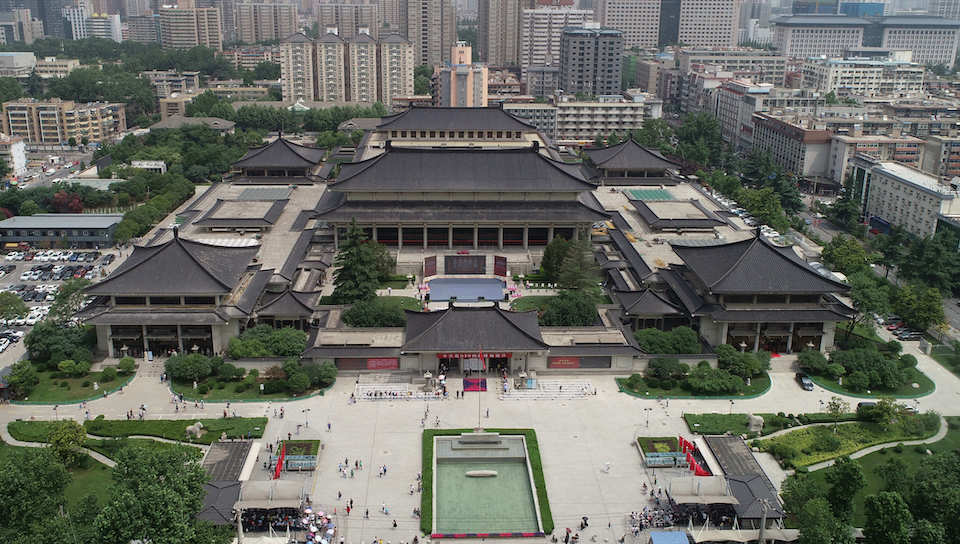
The Shaanxi History Museum is an ideal place to learn about Chinese history, especially the Tang Dynasty. Shaanxi History Museum was built in 1983 and opened to the public on June 20, 1991.
This 65,000 square meter museum displays about 370,000 cultural archaeological relics discovered from the Stone Age to 1840 such as murals, paintings, ceramics, coins, bronze items, silver items…

Shaanxi Historical Museum won the Architectural Innovation Award of the Chinese Association of Architects, became a national 4A-level tourist destination, and was recognized by UNESCO as a world-class museum.
Xi’an Forest of Stele Museum (Beilin Museum)
Forest of Stele Museum has an area of 31,900 square meters and a display area of 4,900 square meters, mainly collecting, researching and displaying stele, epitaphs, and stone statues of previous dynasties. As of the end of 2019, Xi’an Forest of Stele Museum has a collection of 13,568 stone stele works, including 2,281 precious cultural relics.
Important collections of the Xi’an Stele Forest Museum include the “Taoquan stele” of the Han Dynasty, the “The Duobao Pagoda Stele” of Yan Zhenqing (a leading calligrapher of the Tang Dynasty), and the six-horse engraving in Zhaoling of Emperor Taizong of the Tang Dynasty. Xi’an Stele Forest Museum is a National Key Cultural Relic and a national 5A tourist attraction of China.
Hancheng Lake Park
Hancheng Lake Park is located in Weiyang District, Xi’an City. The park includes 7 main parts: Sacrificed Ceremony Zone, Bacheng City, Han Bridges Watertown, Turret Zone, Moonlight in Lake, Fu’ang Scenery, Anmen Gate. Each area has attractions and works themed on water culture and Han Dynasty culture, and there are also many unique check-in points that suit the virtual living needs of many tourists today.
Xi’an Bell Tower
Xi’an Bell Tower is located in the center of Xi’an, at the intersection of the four gates of East, West, South, North and Sixiao in the Xi’an city wall of the Ming Dynasty, and is the largest and best preserved bell tower in China. Xi’an Bell Tower is one of the key cultural relics in Xi’an and also one of the most checked-in tourist attractions in Xi’an.
The Xi’an bell tower was first built at the entrance of today’s Guangji pit in the year of the Emperor Hongwu (1384), opposite the Drum Tower, and was moved to its current location in the 10th year of the Emperor’s reign by Emperor Shenzong of the Ming Dynasty (1582).
Xi’an Drum Tower
Xi’an Drum Tower is located in the center of the ancient capital Xi’an, about 200 meters northwest of Xi’an Bell Tower within the Xi’an City Wall. Built in the thirteenth year of Hongwu Emperor Zhu Yuanzhang (1380), it is one of the largest and best preserved of the many drum towers left over from ancient China.
Xi’an Drum Tower is built on a square base with a brick and wood structure, with a double porch on top, total height is 36 meters, area is 1377 square meters. The eaves are covered with dark green lapis lazuli tiles, the inside of the building is covered with yellow paintings, painted columns and carved crossbeams, and the top is gilded with gold. It is a landmark architectural work of Xi’an.
Along with the Xi’an bell tower, the Xi’an Drum Tower has become one of the tourist attractions of the ancient capital, shared a lot on social media.
Grand Tang Dynasty Ever Bright City
The Grand Tang Dynasty Ever Bright City is located at the foot of the Great Wild Goose Pagoda in Yenta District, Xi’an City, Shaanxi Province, starting from the South Square of the pagoda in the North, to the ruins of the city wall of the Tang Dynasty in South, starting from the Ci’en (Mercy) street in the East and ending at Ci’en street in the West.
The Grand Tang Dynasty Ever Bright City consists of blocks of buildings 2,100 meters long from North to South and wide from West to East. This is the only large pedestrian street that simulates Tang Dynasty buildings and the prosperous culture during the Tang Dynasty, where organizes many cultural, artistic and festival activities with traditional Tang Dynasty colors, and is also a famous local scenic spot at night that attracts many tourists to visit.
Great Wild Goose Tower Square
The square is located right near the northern outer wall of Great Wild Goose Pagoda, 480 meters wide from East to West and 350 meters long from North to South, with an area of 110,000 square meters. This is the square with the largest sculpture scale in Asia, with 2 groups of 100-meter long sculptures, 8 groups of large cubic sculptures and 40 landscape reliefs in the square. The entire square includes fountains, cultural squares, garden landscapes, cultural corridors and tourist and commercial facilities.
Among them, the fountain in the square is the most attractive spot for tourists here, with many fountains combining extremely magical sound and light systems, creating majestic water music that attracts visitors, take their eyes off.
In addition to above attractions you can also visit others such as Qianling Mausoleum where buried Emperor Gaozong and his Empress Wu Zetian of Tang Dynasty, Huashan Mountain…

What to eat in Xian?
Xi’an cuisine is the perfect harmony between Muslim cuisine and ancient Chinese cuisine.

Biangbiang noodles
The first delicacy you should try is biangbiang noodles. This noodle dish is also called waistband noodles. The noodles are big, long and thick. The accompanying broth is delicious and rich. The noodles look quite similar to Vietnamese rice paper noodles.
Noodles are an extremely familiar dish in the daily lives of Chinese people, wherever you go you will find noodle shops, especially in Xi’an, there are many noodle shops with all kinds of dishes like egg noodles, beef noodles… but there is a more famous type of noodle that is Biangbiang noodles. The name is difficult to read, but it is even more difficult to completely write this word, because this word in Chinese combines 58 strokes.
Biangbiang is the word that describes the sound of stretching noodles when kneading dough and rolling dough according to a large sheet. The noodles are made according to a special recipe, flour is added with eggs and cooking oil to create toughness for the noodles.
Biangbiang noodles or Biao noodles are a traditional folk dish of the Han ethnic group in Guanzhong, Shaanxi. The broth has added soy sauce, MSG, vinegar, and pepper to create an unforgettable rich flavor. When serving, add water spinach, carrots and eggs. The color is bright, the noodles are soft and flexible, the broth is light and fragrant, extremely delicious.
Yangrou Paomo (Xi’an Lamb Soup)
Another delicious dish that you must enjoy is yangrou paomo. Diners will have to tear the bread into small pieces themselves. Next, the chef adds it to the soup made from lamb. The flavor of this dish is unique and rich. It is both delicious and extremely nutritious.
Roujiamo (Xi’an sandwiches)
Roujiamo is also another delicious dish for you to try. This is a type of burger. The filling includes shredded braised pork. The shell is grilled crispy, the meat filling is specially marinated, giving it a unique and strange flavor.
This is a traditional dish of the Xi’an region that has appeared since ancient times, the name (roujiamo) comes from the fact that 2 round pieces of bread are sandwiched inside a layer of delicious meat filling. The main ingredients to make this dish are round bread cut in half and sandwiched with a filling made from shredded braised pork belly, herbs, and sauteed bell peppers. Then, grilled over charcoal fire, the aroma of crispy toast combined with the rich flavor of torn meat makes you want to enjoy a few more.
Spicy Cold Skin Noodles (Liangpi)
Liangpi cold noodles is also another delicious dish. Boiled rice noodles then sliced thinly, mixed with satay, garlic, etc. This dish is often eaten with bean sprouts and sliced cucumbers. This is a delicious dish with strong flavors of Xi’an.
Tang Bao soup dumplings
As the original version of Shanghai’s xiaolongbao, the Tang Bao version has a thinner crust and is filled with lamb. The way to make this dish is also quite elaborate, people will first stew the lamb with bones and spices. until it’s very soft, the soup has a sweet taste when stewed, let the soup cool, then put it in the refrigerator to solidify into frost, then cut it into small pieces, put it inside, fill it with minced meat and mushrooms, then wrap it on the outside with the thin shell.
Steam for about 30 minutes until cooked. Tang Bao should be served hot. When eating, people will use a straw to absorb the soup in the dumplings. This dish is served with pickled chili and vinegar.
Qinzhen Cold Rice Noodles
Qintown rice noodles have a history of more than 2,000 years. According to local legend, this type of noodle originated during the Qin Shi Huang period, as an offering to the emperor. This type of noodle is made of rice flour, after being kneaded, it is spread in a multi-layer bamboo cage and steamed. When eating, use a large cutter nearly one meter long and more than 20 cm wide to cut into small strips, add vegetables, small bean sprouts, etc. and season with spices and chili oil for a rich, spicy flavor, very delectable.
Spicy Cumin Lamb Noodles
Spicy Cumin Lamb Noodles is a traditional snack in Shaanxi province, especially in Xi’an. The noodles and meat are cooked thoroughly, soft, the meat and soup are thick, fatty but not greasy, and fragrant and sweet. When eating, people will tear the baked cake into pieces and put it in noodle and add chili, vinegar, coriander, garlic, sugar,… to balance the taste.
Xi’an lamb stew
Salted lamb stewed with hummus is a famous snack in Xi’an. Clean the lamb, add salt, star anise, cinnamon bark, vetiver, pepper, dill and other spices and marinate for 2-5 days. When cooking meat, first put the marinated lamb into the pot, pour in the water, add the seasoning bag, put on high heat, use a heavy object to compress, then simmer on low heat for 3-4 hours, until cooked the meat is crispy and falls off the bone. This is a delicious and nutritious dish, very good for health.
Spicy Rice Noodles with Pork Intestine
Pork intestine noodles a traditional snack in Xi’an, Shaanxi. It originated from the “fried white sausage” in the market of the Northern Song Dynasty. The basic ingredients of this dish are the pig’s large intestine and stomach. When eating, diners break the steamed cake into pieces first, then the chef arranges pork intestines, chicken, sea cucumber, squid, etc. then add the cooked vegetables. When eaten dipped in garlic sugar, chili sauce… it is very delicious, soft, smooth, fatty without being greasy.
Grilled meat skewers (chuan ‘er)
This dish is also an indispensable delicacy when visiting Xi’an. Small chicken skewers costing only 1 yuan have captivated customers. If you go with two people, it’s normal to order up to 100 grilled lamb or beef skewers.
Where to stay?
Muslim quarter: This area is the central and busiest area in Xi’an. This is a place where one step out is something ancient + the smell of food flies into your nose, making you crave it just thinking about it. The houses here are also older, many hostels are very beautiful, the most beautiful are the hostels with an attic above, a balcony overlooking the street, looking both classic and cool.
Below we recommend more best budget, mid-range and upscale hotels with good ratings and reviews you can refer to.
- The Westin Xi’an (Agoda, Booking)
- Angsana Xi’an Lintong (Agoda, Booking)
- Xi’an Eastern House (Agoda, Booking)
- Gran Melia Xi’an (Agoda, Booking)
- Sofitel Xian on Renmin Square (Agoda, Booking)
- The Ritz-Carlton, Xi’an (Agoda, Booking)
- W Xi’an (Agoda, Booking)
- Grand Park Xian (Agoda, Booking)
Check out more top and best hotels in Xian on Agoda.com or Booking.com
No matter where you choose a hotel, a hostel or a homestay, a dorm or a private room, pay attention to the following things:
- Always choose a hotel with a large number of guests, as shown by the number of reviews.
- Good hotels usually have a rating of 8.0 or higher. Below that level, many problems will arise.
- When choosing a hotel, you must have a phone number. If you don’t have one, you won’t be able to call them to ask. This is very trouble because you may not be able to find the hotel.
- You should choose a place that is convenient to travel by public transport. Carrying luggage 1-2km is quite far.
Some things to note when traveling to Xi’an
Below are 5 apps you need to have on your phone and some things you need notice when traveling to Xi’an on your own:
- VPN: This is used to access Facebook and Instagram to live virtually, update stories every moment.
- Google Translate: Used to translate images with Chinese text, and does not require 4G to look up. This is used in restaurants, the menu is full of Chinese and of course no English is spoken.
- Wechat: Used to communicate and make friends with Chinese friends. It’s quite good because in China everything is paid by Wepay, I just don’t have a Chinese bank card, but if I had one I wouldn’t need to bring cash to go out anymore.
- 有道翻译官: The app to translate voice Chinese – English. This app is like a dictionary for Chinese people learning English, it’s amazing. With this app, I can freely travel around China.
- Map.me: Offline map, if you don’t have internet, you can still use the map, just like Google Map.
- Time zone: Time in China is one hour ahead of Vietnam time (GMT 8+).
- Phone: You should buy a SIM card in advance to use in China, call internationally or call back to Vietnam. Call in China: (0086) + phone number.
- When traveling, each tourist is limited to bringing into China the equivalent of a maximum of 6,000RMB at a time.
- When visiting pagodas, temples, cultural and historical relics… there are strict requirements as follows: Men wear polite clothes, do not wear shorts and do not wear slippers, women wear discreet and polite clothes, do not wear short skirts, loose clothes, thin clothes, sleeveless shirts, tight pants…

Some best day tours, trips, activities and transfer services, tickets in, from and to Xian you can refer to
- Xi’an Highlights Day Tour
- Cultural Xi’an One Day Tour
- Xi’an Ancient Chinese Culture Day Tour with Banpo Neolithic Village, Museum of Terracotta Warriors and Horses, and More
- One-day Huashan Adventure Tour (upper and lower from the West Peak) – Chinese commentary (departures every day)
- Cultural Xi’an One Day Tour
- Xi’an Popular Attractions Private Charter
- Xi’an Terracotta Warriors Half Day Tour
- Morning Food & Market Tour
- Terracotta Army Ticket Xi’an
- Classic Xi’an 2 Day Private Tour
- Xi’an City Life Half Day Tour
- Private Xi’an North Railway Station Transfers for Xi’an
- Xi’an Terracotta Army Half-Day Tour
- Han Yang Ling Museum Ticket Xi’an
- Hukou Waterfall Park Ticket (Near Xi’an)
- Dream Back to Tang Dynasty Dance Show Ticket Xi’an
- Xian Qinling Wildlife Park Admission Ticket
- Cuihua Mountain National Geo-Park Admission Ticket
- Shaanxi History Museum Xi’an Admission Ticket
- Qujiang Hanyao Heritage Park Admission Ticket
- Qianling Mausoleum Ticket Xi’an
Check out more China guide here.































![10 best airports in Asia in 2016 [RANKED] kuala-lumpur-international-airport-best airports in asia in 2016 by skytrax ratings](https://livingnomads.com/wp-content/uploads/2016/08/29/kuala-lumpur-international-airport-best-airports-in-asia-in-2016-by-skytrax-ratings-218x150.jpg)





















